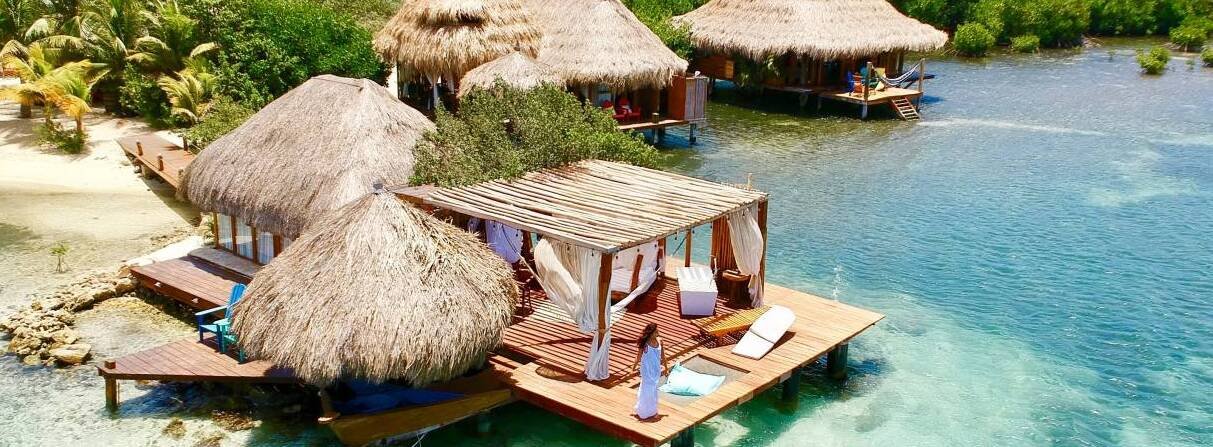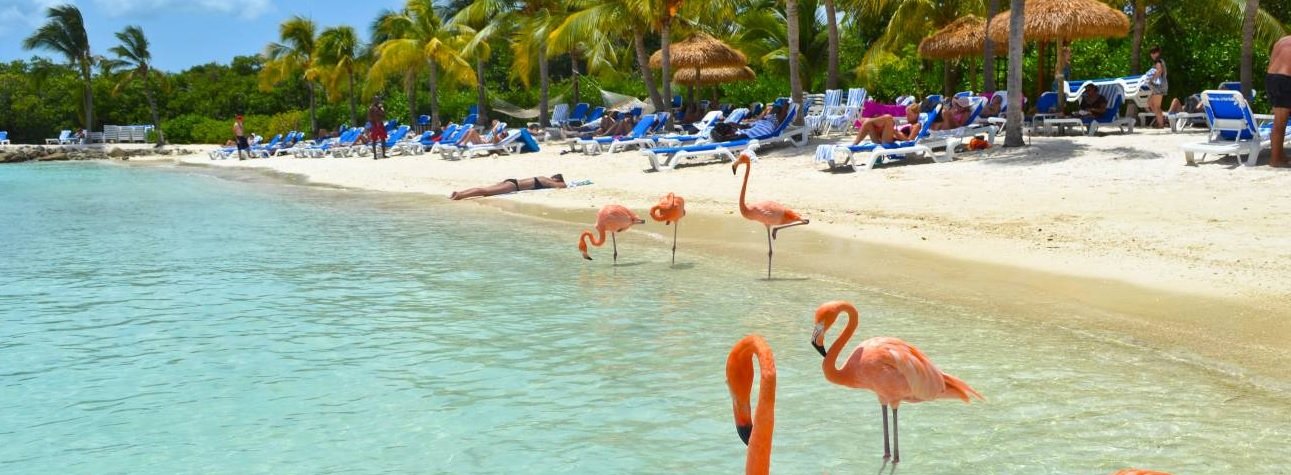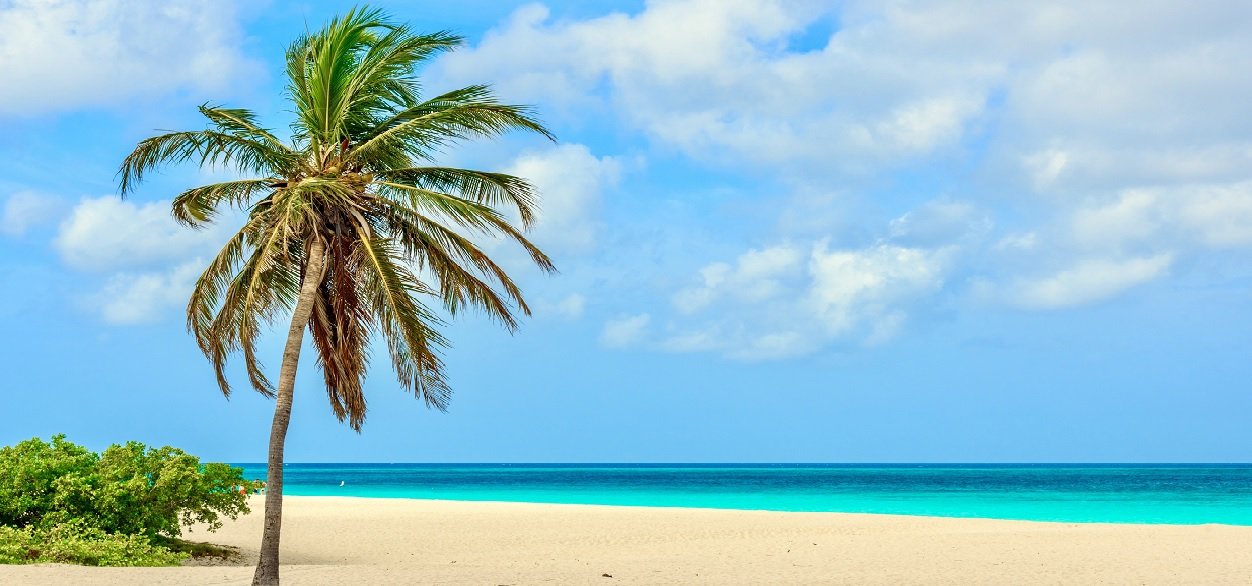Aruba, which can be found in the Netherlands Antilles, is renowned for its stunning beaches with white sand, clear waters teeming with colorful fish, and breathtaking vistas of the ocean. It is one of the most well-known tropical getaways in the entire world, and many tourists who come to the Caribbean make a point of making a stop there. You'll feel as though you've been transported to a tropical version of Amsterdam as you take in the scene of pastel-colored Dutch houses set against the natural backdrop of the island.
However, Aruba has much more to offer than just its beaches and towns. The arid landscape is characterized by the presence of massive boulders and dense cactus forests due to the low amount of rainfall that occurs there. Aruba's cost of living is comparable to that of most other Caribbean islands. Aruba is a popular location for honeymooners and other high-end vacationers, so the prices of hotels, restaurants, and activities on the island are significantly higher than average.
However, Aruba has much more to offer than just its beaches and towns. The arid landscape is characterized by the presence of massive boulders and dense cactus forests due to the low amount of rainfall that occurs there. Aruba's cost of living is comparable to that of most other Caribbean islands. Aruba is a popular location for honeymooners and other high-end vacationers, so the prices of hotels, restaurants, and activities on the island are significantly higher than average.
Aruba's powdery soft beaches and clear waters provide ideal conditions for sunbathing, snorkeling, and swimming. Eagle Beach is the most popular, and because of its wide stretches of sand, it is never overcrowded. There's also Flamingo Beach on Renaissance Island, where you can interact with real flamingos, and Drulf Beach, which is easily accessible from Oranjestad. If you prefer peace and quiet, head to Andicuri Beach, where rocky cliffs frame a long stretch of beach that extends into the turquoise sea. Boca Prins Beach can also be found in Arikok National Park (it has incredible views but watch out for the strong waves).
Kayaking is a relaxing way to explore Aruba's coast. Most hotels provide free kayak rentals to their guests. A rental would otherwise cost around 45 AWG per hour. Take your time exploring the coastline's many small coves. Clear Kayak Aruba, on the other hand, offers tours. Their transparent kayaks allow you to see the reefs and coral beneath you.
This "bridge," which once stretched over 100 feet across and 25 feet high, was naturally carved into the coral by the sea until it collapsed in 2005. It is still a popular tourist destination, serving as a scenic viewpoint and lookout point.

One of the best ways to see the island is on a 4x4 tour, which takes you to parts of Aruba that are off the beaten path, such as the rugged north coast. ABC Tours offers a variety of tours that provide an adrenaline rush as you tear through the backcountry, pause to visit caves and go for a swim and explore hidden beaches. Tours begin at 110 AWG.
Arikok National Park, located in the northeastern part of the island, is home to the majority of Aruba's flora and fauna. It covers approximately one-fifth of Aruba and has a variety of geological features, including volcanic hills and limestone rocks formed from fossilized coral. The park has two beautiful beaches, as well as Conchi, a natural pool that can only be reached by foot, horseback, or 4x4. Arikok is also home to Cunucu Arikok and Fontein Cave, where you can see indigenous Caqueto rock paintings. A day pass costs approximately 20 AWG.
A quad (ATV) allows you to get off the beaten path and explore some of the island's smaller beaches and jungles. While hiring a guide is the most convenient option, you can also explore the island on your own. A half-day rental from Arubiana costs 199 AWG, while a full-day rental costs 229 AWG.

Expensive vacation resorts and golf go together, right? Unfortunately, golf is not a cheap pastime in this town. If you want to hit the links, expect to pay between 160 and 300 AWD per round at Tierra Del Sol, the island's championship course. Its stunning 18-hole course is right on the beach.
Aruba has a complicated history, having been invaded by several colonial powers over the centuries. This former family home has been converted into a museum that displays stone, shell, and ceramic artifacts from Aruba's distant past, dating back to 2,500 BCE. Stay and watch the documentary film on ancient indigenous life to gain a better understanding of the island's long history. There is no admission fee.
The Peace Labyrinth is located on a bluff with a view of the Caribbean. You can walk mindfully through the intricate outdoor stone labyrinth, which is next to a small chapel and is meant to serve as a sort of meditation. The entire Labyrinth had fallen into disrepair in recent years, but in 2019, volunteers restored it to its former glory. The grounds are open for exploration.

Donkeys have been a major mode of transportation on the island of Aruba for over 500 years. Donkeys were less needed after cars arrived, and their population reached an all-time low. Donkeys are now primarily housed in this non-profit sanctuary. It's a fun place to spend an afternoon, especially if you have children because you can feed and care for the donkeys (no riding is allowed). Donations are welcome, but admission is free.
Best season for beachgoers. Unlike in many Caribbean countries, the weather does not play a significant role in Aruba's peak season. Rather, the season is determined by cold weather in North America.
During high season, Oranjestad, Aruba's capital city, will be bustling. From mid-December to mid-April, expect to pay top dollar for lodging, dining, and experiences. During peak season, hotels on the island's most popular beaches, Eagle Beach and Palm Beach can cost up to $1000 per night in the most upscale locations. Reservations should be made several months in advance.

The best time to attract a diverse crowd. Aruba’s best time for saving and socializing is from late spring to late summer. Warmer weather in the United States and Canada means fewer flights from North America. During shoulder season, expect lodging rates to drop by 20 to 30%, and expect a more diverse crowd of visitors, particularly Europeans on summer vacation and South Americans flying north from their winter.
The majority of visitors will still be from the United States at this time of year, but lower rates and a climate that still benefits from a daily breeze make Aruba an appealing option for a wide range of travelers regardless of weather conditions at home.

Best time to travel on a budget. Autumn is the most affordable season to visit Aruba. In September, the trade winds that keep visitors cool in Aruba's desert landscape fade. Lodging discounts of up to 50% off winter highs can make Aruba a relative bargain at this time of year. Because of the lighter winds that keep surface waves at bay, September is also a good time to visit Aruba for snorkeling.

Since Aruba is geared toward tourists and those seeking a luxurious travel experience, there are not many opportunities to save money while you are here. The following is a list of the few ways in which one can save money in Aruba:
Consume the fish that is indigenous to the area. Because you are on an island, local specialties such as grouper, mahi-mahi, and snapper are more affordable than other seafood options, and they are also fresh.
Get the VisitAruba Plus Card. The tourism board has a visitor's program that offers discounts at more than 85 locations in Aruba, including restaurants, shops, activities, and attractions. Discounts can be found on the VisitAruba Plus Card. The cost of the card is 32 AWG, and there is a delivery fee of 7 AWG to either your hotel or your home address.
Enjoy some downtime at the beach, get some exercise on the trail, or watch the sun go down. The natural beauty of Aruba is absolutely breathtaking, and it's completely free!
If you are thinking about going scuba diving or participating in any other kind of activity that is going to cost you a lot of money, make sure to look online for deals first. When you book with the company directly, some businesses provide discounts.
Stay with a local. Although there isn't a large Couch-surfing scene here, if you are able to find a host who will let you stay for free, you will be able to significantly reduce the amount of money you spend on your trip. It's a wonderful opportunity to get to know the locals!
Bring a water bottle with you because the water from the tap is drinkable, but to save money and cut down on the amount of plastic you use, you should bring a water bottle that you can reuse.
Eating out can add up quickly, so if you can find a place to stay that has a kitchen, you can save money by buying groceries and preparing your own meals. It will not be a luxurious experience, but it will be more affordable!
